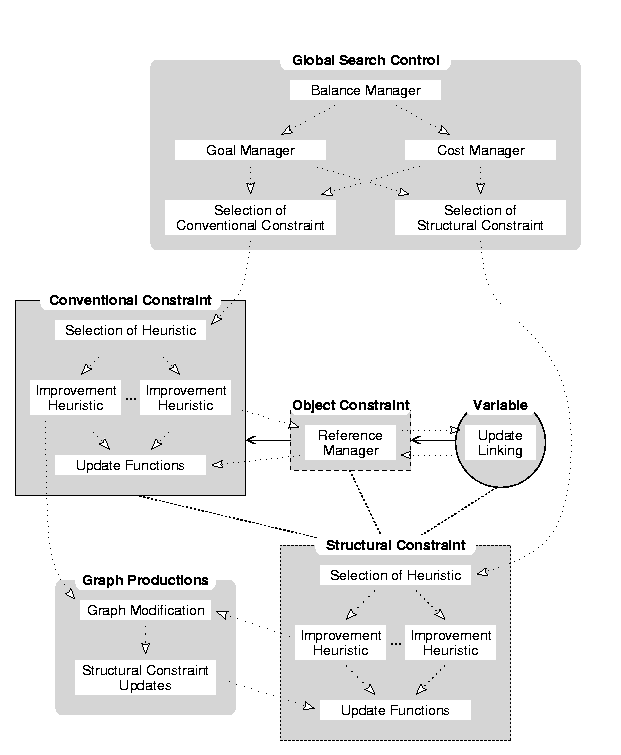
| EXCALIBUR Adaptive Constraint-Based Agents in Artificial Environments |
| [COMBINATION] | [Structural Constraints] [Constraint Types] [Search Control] [Optimization] |
| [ Please note: The project has been discontinued as of May 31, 2005 and is superseded by the projects of the ii Labs. There won't be further updates to these pages. ] |
(Related publications: [PUBLink] [PUBLink])
So far, there has only been a search for a consistent plan. But we want to go beyond satisfaction and optimize the agent's plan according to given goals. These goals can have a conventional as well as a structural nature. Thus, conventional and structural constraints can have a second cost contribution for a second cost function (goal function).
For conventional constraints, it is fairly obvious how the goal function can be influenced, e.g., by the completion time of a task, the workload of a resource or monetary resource costs. The contribution of structural constraints to the goal function focuses mostly on graph minimization, e.g., a structural constraint that forbids redundant structures or one that checks for unconnected object constraints.
The global search control handles this second cost function as well. The functions may compete such that an improvement of one function value may lead to a deterioration in the other function value. Thus, various options for the selection of a function for improvement should be customizable, e.g., alternating phases of a predefined length or with special abort criteria, or a general cost measure consisting of the addition of the single function values multiplied by static (or even variable) coefficients. A constraint that is selected for improvement is told whether to improve its goal or its cost function.
The figure below shows the revised components' interplay (compare to the figure of Section [Global Search Control]).

| [COMBINATION] | [Structural Constraints] [Constraint Types] [Search Control] [Optimization] |
For questions, comments or suggestions, please contact us.
Last update:
May 20, 2001 by Alexander Nareyek